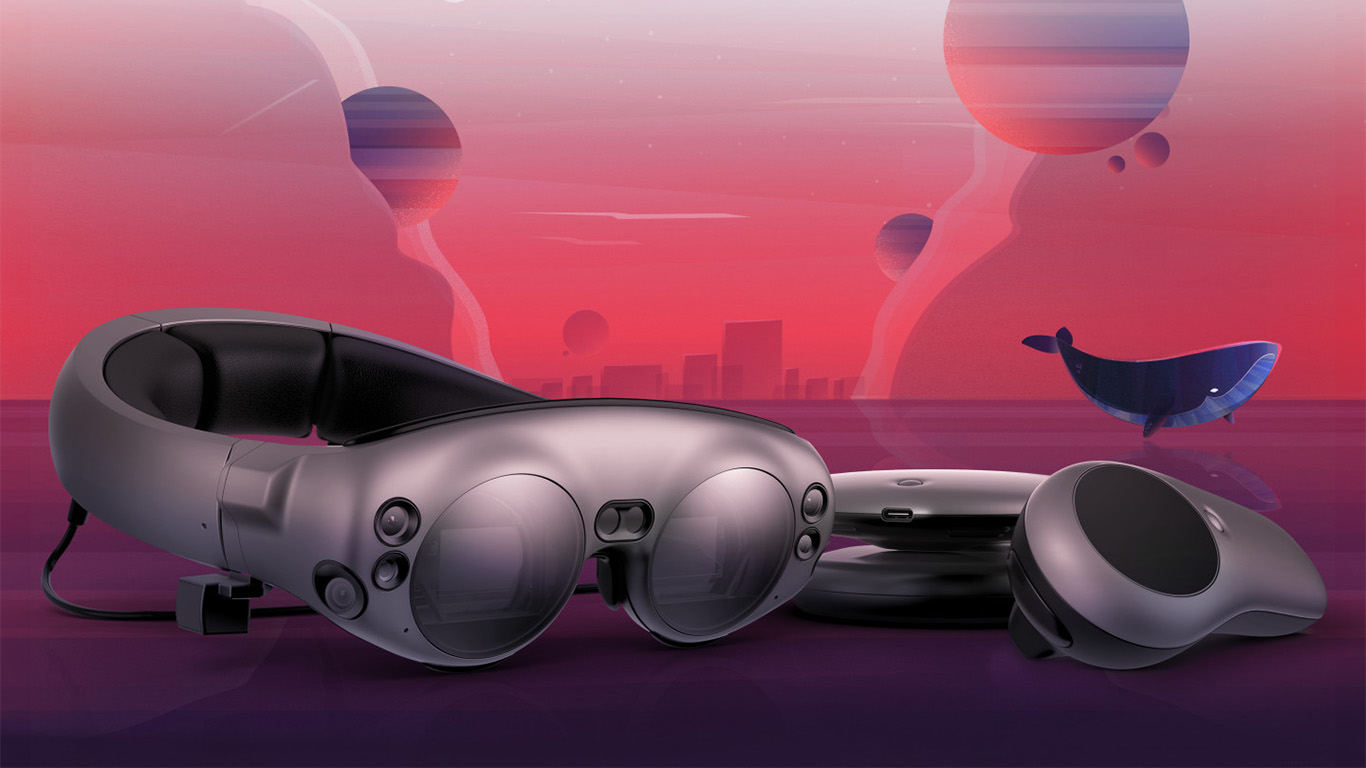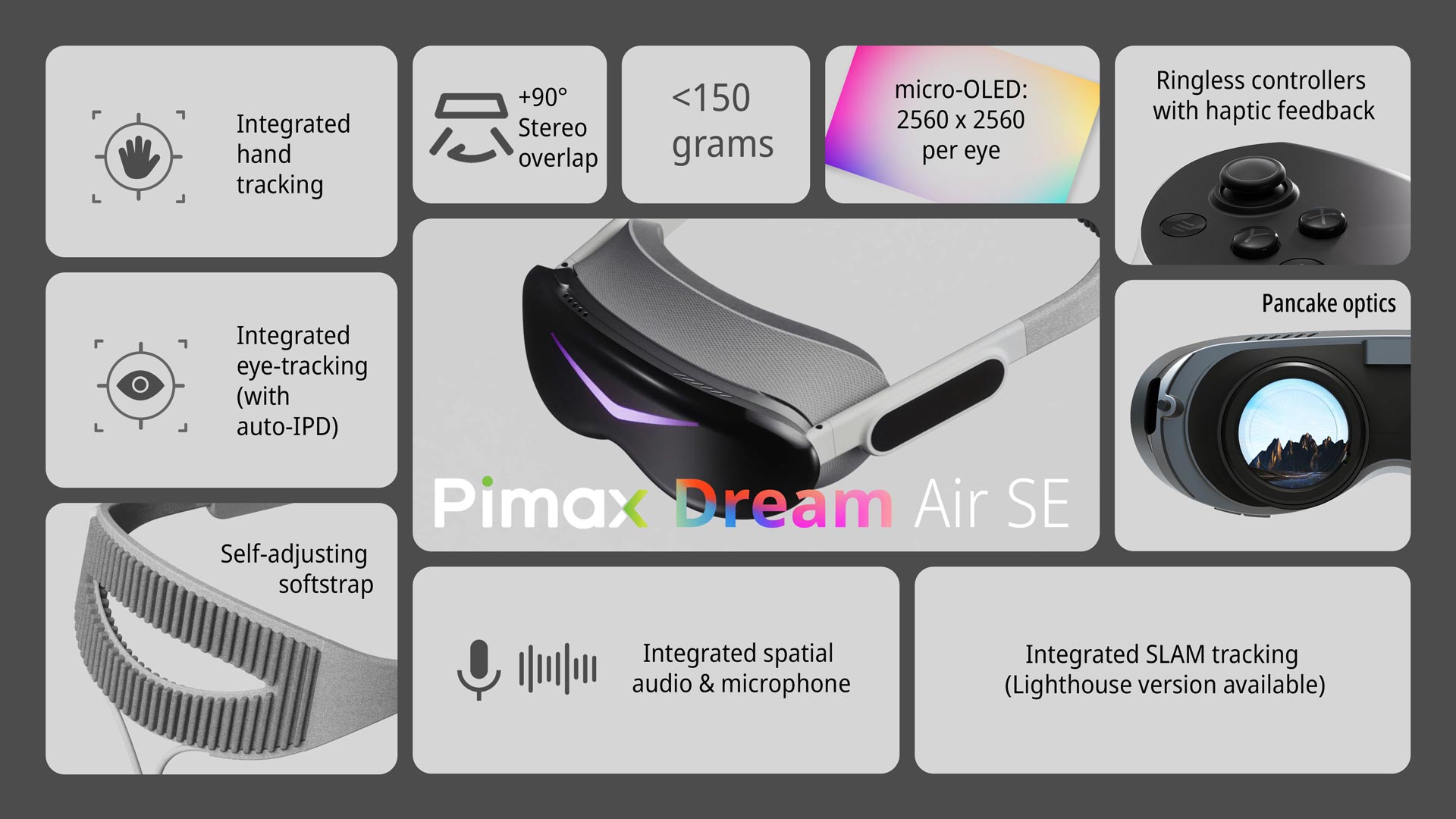My predictions for augmented reality in 2019
It’s the beginning of 2019, and this means that this is that time of the year when we all make predictions for this year in AR and VR!
We all love to make speculations on the technology and I am no exception. It is fun to make predictions… because if, after a year, you were right, you can say to everyone that you made a perfect prediction… and if you were wrong, you are sure that in one year everyone has forgotten what you had said! 😀
Jokes apart, what has happened in AR in 2018… and what can you expect to happen in 2019?
Augmented Reality in 2018
More or less AR in 2018 has gone as I predicted in 2017. Not because I am a genius, but because the technology is still evolving very slowly and so it is very predictable.
Magic Leap

The most important news has been for sure the launch of the Magic Leap One. Priced at $2300 and sold only in the US for now, this glass that has been hyped as something disruptive and
You may hate or love Magic Leap, but the fact that it has released a product is for sure a great news for all the ecosystem: if after all those investments, that startup failed, it would have had a ripple effect on all the ecosystem, making investors lose trust in augmented reality. And this would have created problems for all those little startups seeking funds for their projects.

Magic Leap has also launched a developers grant program to attract talented developers to develop content for the platform, promising grants up to 500,000$. This way, it hopes to have a better content platform than the one that there is now, that is very little.
HoloLens
HoloLens has not shipped any new version of the device, as expected. On the contrary, Microsoft has worked a lot on the platform, to make it more appealing to enterprise customers. It has released experiences like Microsoft Remote Assist, that let different teams in a company work together to solve maintenance problems. The integration with Azure cloud services is also something that increments a lot the value of this device.
Thanks to this solid platform, the US Army has chosen Microsoft for a contract worth $480 M to develop a modify version of HoloLens to be used by soldiers so that to increment their “lethality” on the battlefield. This has been an enormous endorsement for augmented reality.
Trendy AR glasses

This year we have seen the rise of glasses that pair with your smartphone to show you some info directly in front of your eyes. These glasses are quite trendy and if you don’t look them closely, they just look like regular glasses.
Someone may even say that this is not really AR, it is more showing contextual info in front of your eyes. Honestly, I don’t care: I’m really attracted by the fact that these glasses look like regular glasses and we all want that in the future, XR glasses will be trendy and light exactly like this kind of devices.
Some examples of this category of glasses:
- Intel Vaunt (project abandoned);
- North Focals;
- Vuzix Blade;
- Snap Spectacles v2 (they are just cameras to share videos);
- Bose AR glasses (these are not for visual, but for audio augmented reality)
Leap Motion
You may ask why I’m adding Leap Motion here. Well, during 2018, Leap Motion has announced the North Star reference design: a cheap augmented reality connected to PC, that is able to detect your hands very well thanks to Leap Motion’s sensor.

This headset has two great qualities:
- It is very cheap;
- It has a fantastic UX. The video regarding the UX attached to the hands has become viral pretty fast.
The problem is that it is just a reference design, so unless a company wants to take the risk to manufacture it and sell it, it will just be a nice idea. And then there are the financial troubles of Leap Motion, that according to a recent report on Business Insider, is not going that well, economically speaking. And the genius that invented the above UX, Keiichi Matsuda, has left the company.
Mobile AR
Mobile AR has evolved a bit in this year.
The most popular frameworks, ARKit and ARCore, have improved and now they can offer some amazing features: ARKit, for instance, can now track a 3D object (a friend of mine tried it and said it works pretty well), while ARCore can give you Cloud Anchors, so that you can share your AR gaming session with your friends in local multiplayer. With ARKit you can also track your face, and some developers have started also using it as an animation tool. Both systems also track images, and so you can use ARKit and ARCore as you used Vuforia before.

WebAR is slowly starting becoming a thing, and the app developed by The 8th Wall for the Spiderman movie has become pretty popular among AR enthusiasts. Just a click in the browser and you can see Spiderman in AR in your room, without having to install any app. Wow.
A lot of startups have started working on the so-called “ARCloud”, that is a persistent and shared virtual world that is coherent with the real one. This means that it is possible to create AR experiences that are persistent in whatever place of the world and that are shared among all people of the world. 6d.ai is at the forefront of this technology.
Failed companies
We also had bad news from this year. Some important companies in the field have failed and this shows us how this ecosystem is still complicated to stay in.
ODG is launching a patent sale now in January. Blippar has shut down because it wasn’t able to secure more funding. Meta is having funding issues because of the new trade wars between America and China. Leap Motion, as I have said, has not a solid situation.
We are all struggling in the XR field because the market is still unripe and it will still be like that for some time. So, if having a startup in a mature market is already hard, having it in an unripe market is even harder and even important companies can fail.
Predictions for Augmented Reality in 2019
Let’s see how AR can evolve in 2019!
Magic Leap
Magic Leap will work a lot in trying to have new compelling experiences on its marketplace. Thanks to the great funding it has received, it will obtain new partnerships to add cool brands to the roster of apps it already has on its ecosystem (that already features Angry Birds, NBA, Fantastic Beasts, etc…). In the meantime, thanks to the dev grants, it will be able to take more developers to develop for its platform. At the end of 2019, I expect the Magic Leap World marketplace to feature a decent number of cool apps. “Decent” to be a devkit, of course.
It will also for sure continue working on its AI assistant Mica and on the ARCloud ecosystem that should power the MagicVerse, the shared mixed reality world that Magic Leap wants to obtain in like 10 years. During 2019 we will also see support for two controllers of the headset.

I think that the Magic Leap ecosystem will grow, but it won’t explode. The device is still too expensive and too limited both in hardware and in available content for the general consumer.

Anyway, I predict that the headset will start shipping also outside of US, making the platform available in more countries so that to grow the ecosystem.
Probably, but I’m not sure about this, Magic Leap will tease a new version of the Magic Leap glasses at the next LEAP Conference. Abovitz stated in an interview in February that there won’t be only one Magic Leap product, but that there will be different tiers: this Magic Leap One is the medium tier, so we can expect in the future a premium version for prosumers or a lite version for early adopters. I don’t think that this new version will be on sale in 2019, though, since the Magic Leap One has been just launched and the AR products life cycle is quite long.
In the end, I see Magic Leap growing, but its platform still lagging behind HoloLens.
HoloLens
Next-gen HoloLens will become a reality. According to various rumors, this is THE YEAR of the new HoloLens. And my sources say that the launch “is not far from now”. The HoloLens glasses

I don’t think that the launch will come at CES, but in a
The new HoloLens is expected to be lighter (my sources say that it is much smaller than the current one), with a field of view that is the double of the current one, full hands tracking, eye tracking and integration with AI thanks to a dedicated chip (this could add object detection and other fancy features to the device). Of course, it will exploit the already awesome Microsoft platform. The headset will offer a SIM slot so that to connect the device directly to an LTE connection, without the limitation of connecting only through Wi-Fi. I expect a price around $1500-$2000, lower than Magic Leap, so that to compete better against it.
If Next-gen HoloLens will have all the above features offered in the right way, it will wipe completely Magic Leap out of the enterprise sector. It will cost less, it will have higher performances and better services. But matches have to be played on the field, so let’s see what Microsoft will actually deliver.
Apple glasses

In 2019 we’ll see more strategic acquisitions by Apple and more rumors about an incoming AR glass by Apple. But I don’t expect any launch.
In my opinion, Apple will wait until the technology will be ready for some kind of mainstream adoption: the launch will probably be from 2020 on. Apple has always said that is interested in AR, but Tim Cook has also specified that has no interest in being the first, but only in being the best.
Technology is not ready at all: current AR glasses are clunky and have low FOV. And Apple doesn’t want to launch a technology that seems a gadget for nerds and has an apple on it. It will continue developing its AR platform for the future glasses, and educate its users, through ARKit.
Hybrid headsets
The terms AR and VR will start to converge into one headset. All the standalone VR headsets will start offering AR/MR functionalities.
This has already started happening in 2018: the Vive Focus has an AR/MR hack made by me; the Lenovo Mirage Solo is getting MR functionalities offered by Google; the Oculus Quest is expected to have some particular MR features, as Facebook has teased during OC5. Samsung itself has stated that it is very interested in developing a future headset that is able to deliver both AR and VR. Probably this new device will see the light in 2019.
VR headsets will start offering various nuances of realities and won’t be devoted only to VR. These MR features will be rough in the beginning, but I am sure that the more we’ll go on, the more the companies will bet on them.
Trendy AR glasses
In my opinion, this kind of glasses won’t take off. They look cool, but they cost a lot (around $1000) and offer more or less the same functionalities of smartwatches (another technology that never took off) but requiring you to wear something on your face (something people is adverse to).
They will sell in some niches of enterprise workers, to early adopters and nerds that want to look cool. But I don’t expect any mainstream adoption.
Mobile AR
The mobile AR bubble will burst.
This is my harshest prediction for the year. When VR started getting in trouble, ARKit came out and the product seemed solid. Analysts started predicting huge success for mobile AR, with billions of dollars everywhere and developers starting earning money in 2019.
Now, I am not seeing that happening. Yes, there have been some nice AR apps launched in 2018 (like Ikea Place), but mobile AR usage is really lagging. There are some apps
When talking about Mobile AR potentialities, people still refer to Pokemon Go, that is an application that came out in 2016, and for which AR was just a little detail (the success of the app was given by geolocation and the Pokemon brand). No other app has replicated that success and there must be a reason: the user experience of AR mobile app is awful, with the user required to continuously have the smartphone in front of his eyes.
In 2019, people will realize that mobile AR had been overhyped and we’ll have some panic, maybe. It is the history of all immersive technologies: they get overhyped and then people become disappointed and say that it is a fad because it has not reached the inflated expectations (see what is happening with VR).
The only possibility for this to not happen is that the Harry Potter experience that Niantic will release will be as successful as Pokemon Go. But this will only prove again that geolocation and a good brand are a recipe for success

Notwithstanding this, smart developers will release some interesting mobile AR apps, that will exploit the new features of the technology. But I expect the really interesting apps to be just a few (e.g. Google Maps in AR).
This will mean that finally, in the end, we’ll have more realistic expectations about mobile-based AR. Don’t misunderstand me: I am not saying that mobile-AR is useless, I am saying that there are unrealistic expectations about it.
What will be successful will be the applications with AR face filters and promotional experiences offered by brands (Facebook Messenger, Instagram and Snapchat). I see them evolving and become always more popular and always more used for advertisement. They are very handy to be used, because we already use our smartphone to portrait our face, and they are also very cool. And we all love publishing trendy selfies.
The development platforms (ARKit, ARCore) will grow and will add always more features. One of them will be an always growing attention towards multiplayer capabilities.
Vuforia will slowly start getting into trouble because the other frameworks are implementing most of the features it offers. The ARCloud will start becoming a reality: some companies will publish the results that are obtaining with it, while others will keep it behind the curtains (I think that Apple will be in this group). These AR platforms, that will have a growing number of functionalities, will be mostly developed as a foundation for the upcoming AR glasses.
5G
5G will start rolling out and we will see some experiments between 5G and AR. I think that in 2019 we will just see some first experimentations, that will pave the way to the one that will happen from 2020 on.
Surprises
I hope that will also happen something that will surprise me: some interesting Chinese AR glass (Huawei said that is interested in the technology, but I don’t expect a launch this year); the launch of an AR headset by Samsung, Google, HTC or other major company; or Magic Leap acquired by some company; or a killer mobile AR app (that will also kill my prediction); or… I don’t know.
Please, AR ecosystem, surprise me! 😉
In conclusion…
It will be an interesting year for AR, but I don’t expect any possibility of mainstream
The release of the next-gen HoloLens, with all its new functionalities, will allow a lot of new applications and will give more trust to glass-based AR. At the same time, VR glasses will lean towards AR and this will also offer a new kind of mixed reality experiences.
Mobile-based AR will probably get in trouble and this will help in creating more realistic expectations for the technology.
In the end, I think that we’ll end 2019 with augmented relaity that has grown, but that has still a very long road to go.
I hope that you enjoyed these predictions and if it is the case, please subscribe to my newsletter! See you in 2020!
(Header image by Magic Leap)
Disclaimer: this blog contains advertisement and affiliate links to sustain itself. If you click on an affiliate link, I'll be very happy because I'll earn a small commission on your purchase. You can find my boring full disclosure here.



